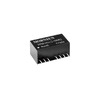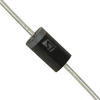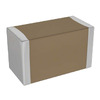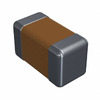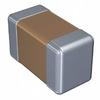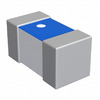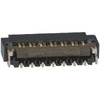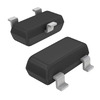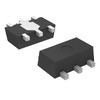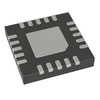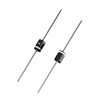LM393D Comparator: Features, Specifications, and Datasheet
The LM393D is a popular, powerful dual-voltage comparator that’s used in all kinds of electronic projects. Everyone love it for its low power usage and reliable accuracy when it comes to detecting voltage changes. In this article, we'll take a closer look at the LM393D, especially the version made by STMicroelectronics. We’ll go over its pin layout, technical features, and how it’s used in different applications, showing why it’s such a valuable tool for creating new and exciting projects.Catalog
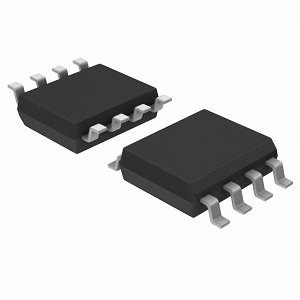
What is the LM393D?
The LM393D is a chip that contains two low-voltage comparators, each able to work on its own. It’s built to run on a single power supply across a wide voltage range, but it can also use split power supplies, making it flexible for different uses. One of its standout features is that it can handle ground as part of its input range, even when using just one power source. This makes the LM393D a great choice for all kinds of electronic projects, from simple designs to more complex systems. Thanks to its broad voltage compatibility, it can work with regular batteries or other low-voltage sources while still performing well. This flexibility is especially helpful during prototyping and for applications where end needs might vary. The ability to include ground in the input range without extra parts makes circuit design simpler. This feature allows for easier layouts with fewer parts, improving both reliability and efficiency. Fewer components mean lower costs and make troubleshooting and maintenance easier, since there are fewer parts that could fail.
LM393D Pin Configuration

Features of the LM393D
• Low Power Consumption: Steady supply current of only 0.45 mA, regardless of supply voltage changes.
• Energy Efficiency: Supports energy conservation for extending battery life in portable devices.
• Low Input Bias/Offset: Features low input bias and offset currents, and minimal input offset voltage, enhancing signal processing accuracy.
• Input Range Includes Ground: Can handle ground within its input range, easing integration into various circuits without extra voltage adjustment components.
• Compatible with Multiple Logic Families: Works with TTL, DTL, ECL, MOS, and CMOS logic families, providing broad application potential.
• Versatile Use: Ideal for applications ranging from simple comparators to complex control systems, facilitating innovative solutions in both amateur and industrial settings.
LM393D Technical Specifications
|
Type |
Parameter |
|
Lifecycle Status |
ACTIVE (Last Updated: 7 months ago) |
|
Mount |
Surface Mount |
|
Package / Case |
8-SOIC (0.154, 3.90mm Width) |
|
Weight |
4.535924g |
|
Packaging |
Tube |
|
Part Status |
Active |
|
Number of Terminations |
8 |
|
Type |
General Purpose |
|
Max Power Dissipation |
710mW |
|
Terminal Form |
GULL WING |
|
Number of Functions |
2 |
|
Time@Peak Reflow Temperature-Max (s) |
30 |
|
Pin Count |
8 |
|
Power Supplies |
5V |
|
Nominal Supply Current |
1mA |
|
Factory Lead Time |
25 Weeks |
|
Mounting Type |
Surface Mount |
|
Number of Pins |
8 |
|
Operating Temperature |
0°C~70°C |
|
JESD-609 Code |
e4 |
|
Moisture Sensitivity Level (MSL) |
1 (Unlimited) |
|
ECCN Code |
EAR99 |
|
Terminal Finish |
Nickel/Palladium/Gold (Ni/Pd/Au) |
|
Terminal Position |
DUAL |
|
Peak Reflow Temperature (Cel) |
260 |
|
Supply Voltage |
5V |
|
Base Part Number |
LM393 |
|
Output Type |
CMOS, DTL, ECL, MOS, Open-Collector, TTL |
|
Number of Circuits |
2 |
|
Power Dissipation |
710mW |
|
Output Current |
18mA |
|
Propagation Delay |
1.3 μs |
|
Turn On Delay Time |
1.3 μs |
|
Voltage - Supply, Single/Dual (±) |
2V36V ±1V18V |
|
Input Offset Voltage (Vos) |
1mV |
|
Average Bias Current-Max (IIB) |
0.4μA |
|
Max Input Current |
250nA |
|
Input Bias Current |
250nA |
|
Voltage - Input Offset (Max) |
5mV @ 30V |
|
Ambient Temperature Range High |
70°C |
|
Current - Output (Typ) |
18mA @ 5V |
|
Length |
4.9mm |
|
REACH SVHC |
No SVHC |
|
Radiation Hardening |
No |
|
Max Supply Current |
1mA |
|
Quiescent Current |
2.5mA |
|
Response Time |
1.3 μs |
|
Output Current per Channel |
18mA |
|
Voltage Gain |
108.02dB |
|
Supply Voltage Limit-Max |
36V |
|
Dual Supply Voltage |
9V |
|
Max Junction Temperature (Tj) |
150°C |
|
Current - Input Bias (Max) |
0.25μA @ 5V |
|
Natural Thermal Resistance |
125 °C/W |
|
Height |
1.75mm |
|
Width |
3.9mm |
|
RoHS Status |
ROHS3 Compliant |
|
Lead Free |
Lead Free |
Block Diagram of the LM393D
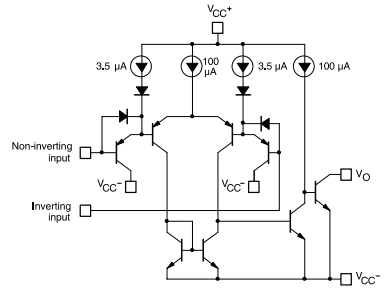
Alternatives to the LM393D
|
Part Number |
Description |
Manufacturer |
|
LM393DG4 |
Dual differential comparator, commercial-grade 8-SOIC 0
to 70 |
Texas Instruments |
|
LM393N/NOPE |
Low Power Low Offset Voltage Dual Comparator 8-PDIP 0 to
70 |
Texas Instruments |
|
LM393M/NOPE |
IC DUAL COMPARATOR, 9000 UV OFFSET-MAX, 1300 ns RESPONSE
TIME, PDSO8, LEAD-FREE, SOIC-8, Comparator |
National Semiconductor Corporation |
|
LM393MX/NOPE |
Low Power Low Offset Voltage Dual Comparator 8-SOIC 0 to
70 |
Texas Instruments |
|
LM393YDT |
DUAL COMPARATOR, 9000uV OFFSET-MAX, 1300ns RESPONSE TIME,
PDSO8, LEAD-FREE, MICRO, PLASTIC, SOP-8 |
STMicroelectronics |
|
LM393D |
Dual differential comparator, commercial-grade 8-SOIC 0
to 70 |
Texas Instruments |
|
LM393M |
Comparator |
Bay Linear Inc |
|
LM393MX_NL |
Comparator, 2 Func, 9000uV Offset-Max, 1400ns Response
Time, BIPolar, PDSO8, SOP-8 |
Fairchild Semiconductor Corporation |
|
LM393DRG3 |
Dual differential comparator, commercial-grade 8-SOIC 0
to 70 |
Texas Instruments |
|
LM393DG |
Comparator, Dual, Low Offset Voltage, SOIC-8 Narrow Body,
98-TUBE |
ON Semiconductor |
Optimizing LM393D Role in Circuitry
The LM393D serves as an important element akin to the LM311 comparator IC, predominantly engaged in tasks involving voltage contrast within digital networks. It incorporates both inverting and non-inverting input terminals, determining the output by evaluating voltages at these junctions. This comparator frequently finds its place in projects needing logic level transformations or elementary analog-to-digital functions, showcasing its wide-ranging application in circuit design. The LM393D operates with a conventional +5V power source. The VCC+ pin links to the +5V supply, while the VCC- pin is connected to ground, establishing a stable 0V reference. This setup is use in achieving reliable performance and averting issues related to power supply fluctuations. By adjusting the voltage applied to both the inverting and non-inverting inputs, others can deftly manage the output behavior of the LM393D. This regulation of voltage inputs facilitates precise operations, like triggering specific actions when threshold parameters are fulfilled. Though the LM393D offers pins for DC offset adjustments, these are commonly left unused to simplify overall input management. It's observed that eschewing manual adjustments can enhance performance and minimize design complexity.
Applications of the LM393D
Signal Conditioning
Application of the LM393D lies in signal conditioning, where it plays a role in filtering noise from analog signals. By judiciously comparing incoming signals to a reference voltage, it can assess signal integrity with finesse.
Pulse Width Modulation
In motor control, the LM393D is employed for pulse width modulation (PWM), benefiting from its high-speed differential input. It adeptly transforms varying input signals into PWM outputs, a capability treasured for facilitating motor speed and efficiency adjustments. Others have found that adhering to recommended operating conditions nurtures stable PWM signals, bolstering reliable motor control to meet technical demands.
Voltage Regulation
In voltage regulation tasks, the LM393D acts as a core component in control circuits monitoring and optimizing voltage levels. By vigilantly detecting fluctuations, it supports maintaining stability in output, a feature cherished for protecting sensitive equipment.
Battery Monitoring
The comparator's proficiency in voltage level analysis extends to battery monitoring systems, which rely on it to provide assessments of battery health and charge status. By continuously matching battery voltage against predefined thresholds, it helps avert overcharging or deep discharging, an aspect for prolonging battery life and promoting safety. This ability holds particular appeal in scenarios where maintaining battery integrity is needed.
Motion Detectors
Incorporated within motion detectors, the LM393D evaluates shifts in input signals, such as those from infrared sensors, effectively processing these signals to initiate alerts or actions. Field observations highlight that incorporating the LM393D enhances responsiveness and accuracy in detection systems, a trait valued for ensuring security and efficiency in dynamic environments.
Overcurrent Protection
The LM393D element in crafting overcurrent protection circuits designed to prevent damage from excessive current flow. By detecting potential overcurrent situations through comparative analysis of sensed currents and set limits, it offers a protection strategy that balances cost-effectiveness with reliability.
LM393D Manufacturer Information
STMicroelectronics distinguishes itself within the semiconductor realm, celebrated for crafting intricate solutions that seamlessly merge cutting-edge manufacturing prowess with an expansive array of intellectual property assets. The company nurtures strategic collaborations that amplify its global presence, propelling ongoing progress. With an emphasis on system-on-chip (SoC) technology, STMicroelectronics fuels remarkable developments across various modern applications, driving forward fields like telecommunications, electronics, and automotive industries. STMicroelectronics' core approach involves turning visionary ideas into concrete realities through meticulous attention to innovation and strategic partnerships. This relentless pursuit of excellence is evident in their wide range of solutions that continually challenge the limits of technological possibilities.
Datasheet PDF
LM393D Datasheets:
MEMS and Sensors 27/Aug/2013.pdf
New Material Set for SO8 & SO14 Pkg 18/Nov/2015.pdf
Mult Dev Cover Tape Chg 14/Aug/2019.pdf
Mult Devices Lead Frame 12/Jan/2018.pdf
LM393D Datasheets:
LM193,293,393(A), 2903(V) Datasheet.pdf
Mult Devices Font 21/Apr/2018.pdf
Cylindrical Battery Holders.pdf
LM393DRG3 Datasheets:
LM393B, LM2903B, LM193, LM293, LM393, LM2903.pdf
BOM/Assembly Site Updates 03/Dec/2014.pdf
Assembly Site Add 22/Oct/2015.pdf
Assembly Site Add Rev 27/Oct/2015.pdf
LM393DG Datasheets:
Cylindrical Battery Holders.pdf
Cylindrical Battery Holders.pdf
SOIC08 Copper Wire 04/Jul/2013.pdf
About us
ALLELCO LIMITED
Read more
Quick inquiry
Please send an inquiry, we will respond immediately.
Frequently Asked Questions [FAQ]
1. What is the role of the LM393 in electrical circuits?
The LM393 serves as a versatile dual voltage comparator with distinct input and output terminals. It adeptly switches output levels based on the input voltage's relationship to a preset reference voltage. The comparators' precise switching capability boosts performance, aligning well with the desire for accuracy and effectiveness.
2. Can the LM393 be substituted with the LM358?
Generally, substituting the LM393 with the LM358 is not advisable. While the LM358, an operational amplifier, can somewhat mimic a comparator’s role, it does so with notable limitations in speed and precision. Conversely, the LM393 lacks the amplification attributes inherent in the LM358, given their core design differences.
3. In what ways does the LM293 stand apart from the LM393?
A key distinction of the LM293 from the LM393 is observable in their temperature operating ranges. The LM293 is capable of functioning across a broader range of -25°C to 85°C, as opposed to the LM393's 0°C to 70°C. This broader range renders the LM293 an excellent choice for environments prone to temperature variations or extremes.
4. What process is followed for voltage comparison using the LM393?
Employing the LM393 for voltage comparison entails establishing a reference voltage and deploying adjustable attenuation circuits to manage varying input levels. This comparator supports both inverting and non-inverting comparisons, which are further utilized to operate an LED via an inverter circuit. This approach is advantageous for developing systems demanding swift reactions and minimal power consumption, underscoring the LM393's utility and adaptability in a broad spectrum of applications.
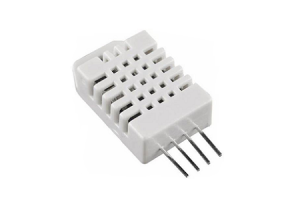
Unlocking DHT22: The Ultimate Sensor Guide
on November 11th

PIC16F887 8-bit Microcontroller: Datasheet, Programming, and Specifications
on November 11th
Popular Posts
-

What is GND in the circuit?
on January 1th 3151
-

RJ-45 Connector Guide: RJ-45 Connector Color Codes, Wiring Schemes, R-J45 Applications, RJ-45 Datasheets
on January 1th 2707
-

Understanding Power Supply Voltages in Electronics VCC, VDD, VEE, VSS, and GND
on November 16th 2291
-

Fiber Connector Types: SC Vs LC And LC Vs MTP
on January 1th 2195
-

Comparison Between DB9 and RS232
on January 1th 1815
-

What Is An LR44 Battery?
Electricity, that ubiquitous force, quietly permeates every aspect of our daily lives, from trivial gadgets to life-threatening medical equipment, it plays a silent role. However, truly grasping this energy, especially how to store and efficiently output it, is no easy task. It is against this background that this article will focus on a type of coin cell battery that may seem insignificant on the...on January 1th 1787
-

Understanding the Fundamentals:Inductance Resistance, andCapacitance
In the intricate dance of electrical engineering, a trio of fundamental elements takes center stage: inductance, resistance, and capacitance. Each bears unique traits that dictate the dynamic rhythms of electronic circuits. Here, we embark on a journey to decipher the complexities of these components, to uncover their distinct roles and practical uses within the vast electrical orchestra. Inductan...on January 1th 1737
-

CR2430 Battery Comprehensive Guide: Specifications, Applications and Comparison to CR2032 Batteries
What is CR2430 battery ?Benefits of CR2430 BatteriesNormCR2430 Battery ApplicationsCR2430 EquivalentCR2430 VS CR2032Battery CR2430 SizeWhat to look for when buying the CR2430 and equivalentsData Sheet PDFFrequently Asked Questions Batteries are the heart of small electronic devices. Among the many types available, coin cells play a crucial role, commonly found in calculators, remote controls, and ...on January 1th 1699
-

What Is RF and Why Do We Use It?
Radio Frequency (RF) technology is a key part of modern wireless communication, enabling data transmission over long distances without physical connections. This article delves into the basics of RF, explaining how electromagnetic radiation (EMR) makes RF communication possible. We will explore the principles of EMR, the creation and control of RF signals, and their wide-ranging uses. The article ...on January 1th 1695
-

Comprehensive guide to hFE in transistors
Transistors are crucial components in modern electronic devices, enabling signal amplification and control. This article delves into the knowledge surrounding hFE, including how to select a transistor's hFE value, how to find hFE, and the gain of different types of transistors. Through our exploration of hFE, we gain a deeper understanding of how transistors work and their role in electronic circu...on November 16th 1661


